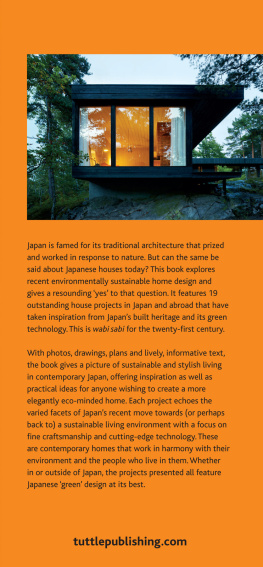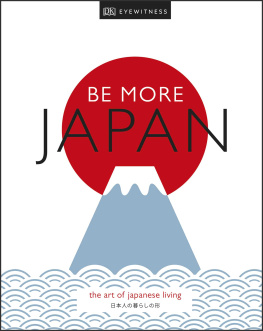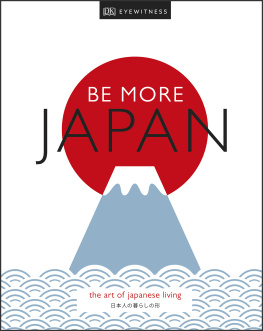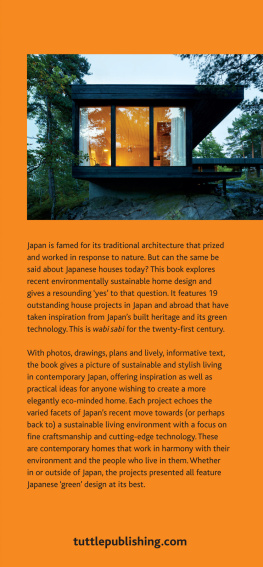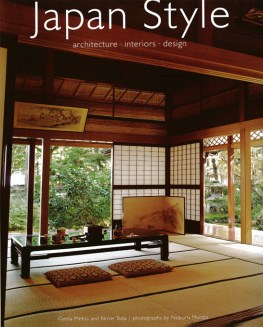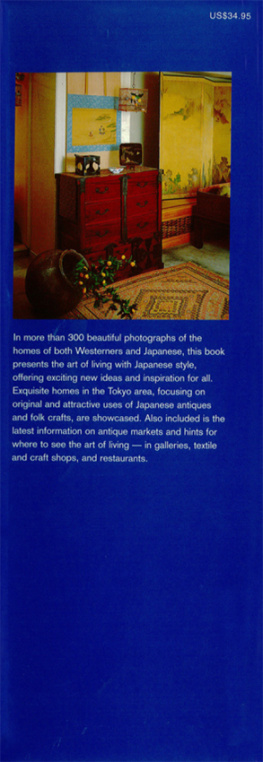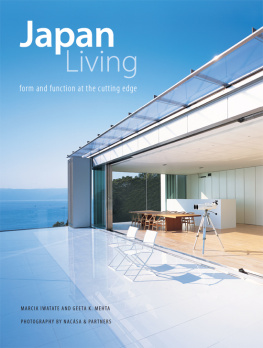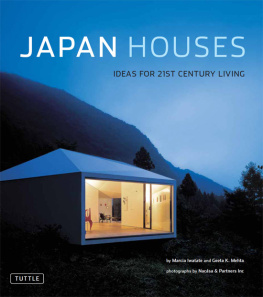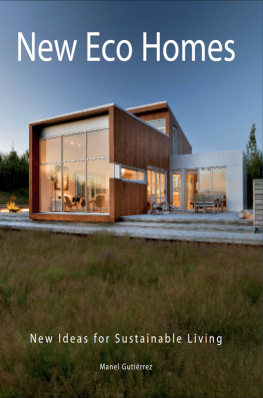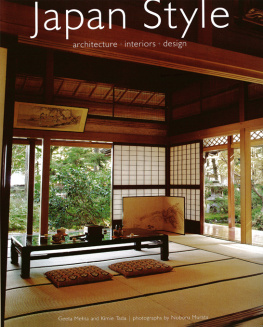ABOUT TUTTLE
BOOKS TO SPAN THE EAST AND WEST
Our core mission at Tuttle Publishing is to create books which bring people together one page at a time. Tuttle was founded in 1832 in the small New England town of Rutland, Vermont (USA). Our fundamental values remain as strong today as they were thento publish best-in-class books informing the English-speaking world about the countries and peoples of Asia. The world has become a smaller place today and Asias economic, cultural and political influence has expanded, yet the need for meaningful dialogue and information about this diverse region has never been greater. Since 1948, Tuttle has been a leader in publishing books on the cultures, arts, cuisines, languages and literatures of Asia. Our authors and photographers have won numerous awards and Tuttle has published thousands of books on subjects ranging from martial arts to paper crafts. We welcome you to explore the wealth of information available on Asia at www.tuttlepublishing.com
ACKNOWLEDGMENTS
I would like to give my sincere thanks to all who helped in the completion of this book. There were many architects, designers and photographers who shared their work, stories and ideas. Many went beyond the call of duty.
Miwa Mori of Key Architects accompanied me to see her Passive House in Karuizawa (my thanks to the owner as well), while Kazuyuki Igawa came from Chiba to Tokyo to spend a few hours describing his recent house renovation and the importance of saving traditional houses for modern families. Edward Suzuki was first on board with his thoughtful Katsura-inspired project, and in Kyoto Moritz Kruger was an enthusiastic and helpful source of information on Aoi Kyoto Stays machiya restorations. Mariko Inaba of Kengo Kuma and Associates spent much effort in finding the right images, and in Norway Irene Svik and Ivan Brodley kindly responded to a roundabout request. Lenka Kremenova of A1 Architects provided thoughtful insights into what Japanese aesthetics have to say to Bohemia. Jim Lambiasi has been incredibly supportive of the project from its beginning and helped with the invaluable assistance of Joshua Ito, who kindly redrew many of our architectural plans.
To all those at Tuttle Publishing who helped see this book through to completion, thank you so much for your hard work, patience and professionalism.
Most of all, I would like to thank Dr Geeta Mehta without whom my life in Japan would have been very different. She introduced me to the world of Japanese architecture, sharing her time, knowledge and clear ethical perspective on the built environment. Without her amazing generosity, this book would not have been written.
ARCHITECTS AND DESIGNERS
A1 Architects (page )
a1architects.cz
Hostavick 44/37
Praha 14, 19800
Czech Republic
acaa (page )
ac-aa.com
4-15-40-403 Nakakaigan
Chigasaki-shi
Kanagawa 253-005
Japan
architect caf (page )
mikio tai architect associates
architect-cafe.com
501 Matsuhiro Building
3-14-8 Ginza Chuo-ku
Tokyo 104-0061
Japan
Atelier Tekuto (page )
tekuto.com
Jinguemai Forest Building B1F
Jinguemae 4-1-20, Shibuya
Tokyo 150-0001
Japan
BAKOKO Architects (page )
bakoko.jp
85-4-402 Nemoto
Matsudo
Chiba 271-0077
Japan
Edward Suzuki Associates (page )
edward.net
Keyaki House 101
19-10-3 Nishi-Azabu
Minato-ku
Tokyo 106-0031
Japan
Fujimura Masatsugu (page )
en.kyoto-stay.jp/list/shinmachi.html
Aoi Corporation
Tenno-cho 145-1, 4F
Kiyamachi-dori Bukkoji-agaru
Shimogyo-ku
Kyoto 600-8013
Japan
Igawa Architects (page )
igawa-arch.com
Kowata 613
Inashiki
Ibaraki prefecture 300-0638
Japan
Irene Svik architect (page )
MNAL savik.no
Skovveien 39A
0258 Oslo
Norway
Kengo Kuma and Associates (page )
kkaa.co.jp
2-24-8 BY-CUBE 2F
Minami-Aoyama, Minato-ku
Tokyo 107-0062
Japan
Key Architects (pages )
key-architects.com
2-2-2 Ohmachi
Kamakura
Kanagawa 248-0007
Japan
Konishi Gaffney (page )
konishigaffney.com
132 Constitution Street
Edinburgh EH6 6AJ
Scotland
Lambiasi + Hayashi Architects (page )
lh-arch.com
2-17-12-101 Aobadai
Meguro-ku
Tokyo 153-0042
Japan
rhythmdesign (page )
rhythmdesign.org
7-26-10-3 Okusunoki
Fukuoka Itiminami
Fukuoka 815-0082
Japan
Studio Junction (page )
studiojunction.ca
2087 Davenport Road
Toronto
Ontario M6N 1C9
Canada
Takashi Okuno Architectural Design Office (page )
okunotakashi.sakura.ne.jp
2-18-1 Misake #4, 3F
Miasakemachi
Matsuyama
Ehime prefecture 790-0814
Japan
Uemachi Laboratory (page )
www.uemachi.org
Terahata 2-9-10
Kawanishi
Hyogo 666-0034
Japan
Yasushi Horibe Architect & Associates (page )
1.ocn.ne.jp/~horibe-a/index.html
3F, 10-5 Fukuromachi,
Shinjuku-ku
Tokyo 162-0828
Japan
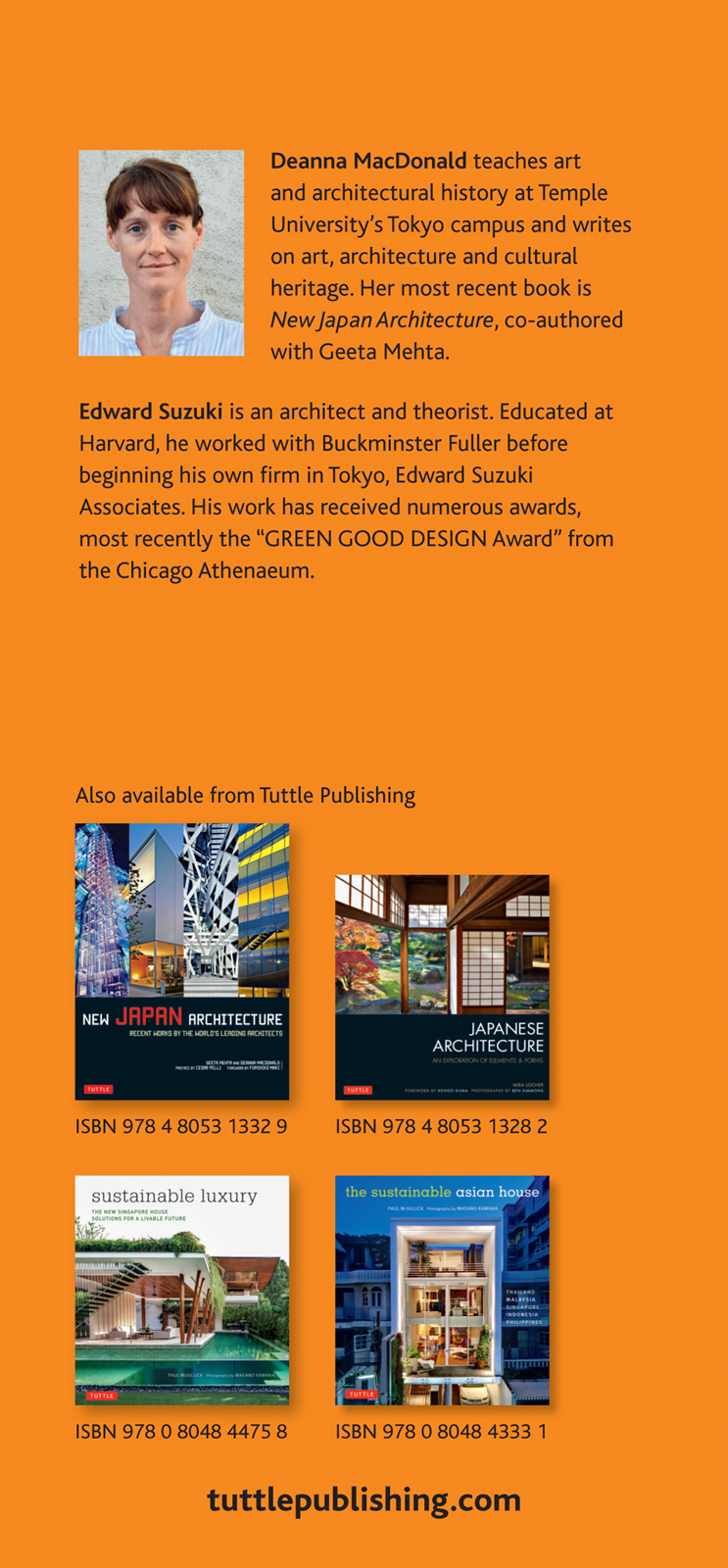
CHAPTER 1
BORROWED LANDSCAPES
PUTTING NATURE IN THE DESIGN
This section looks at projects that incorporate nature in the design, quite literally, whether by including actual trees and gardens as natural green curtains or by employing the age-old Japanese concept of shakkei, or borrow landscape, in which exterior nature views are made part of the interior experience of the home.
Architecture and nature were closely linked in traditional Japanese building. In pre-modern Japan, houses were made of renewable natural materials and gardens were features in high-end houses as well as at the heart of dense working-class city blocks. The dense concrete urbanity of contemporary Japan has taken much of the green out of everyday life. A garden has now become something one occasionally visits.
American biologist and naturalist E. O. Wilson has hypothesized that human beings have an instinctive bond with other living systems, that is, nature. According to Wilson, Nature holds the key to our aesthetic, intellectual, cognitive and even spiritual satisfaction. Our living spaces should reflect this natural affinity, bringing in natural light, fresh air and a sense of place.
Can bringing nature into the home really make people happier and homes healthier and more sustainable? These projects suggest that it does. Yasushi Horibes House in Tateshina frames nature as an ever-changing work of art. Uemachi Laboratorys House in Nara echoes and embellishes its tranquil garden setting. With a small footprint, natural materials and a unique design open to and respectful of its verdant and historic environment, acaas House in Kita-Kamakura adds to the already abundant beauty of its surroundings. Rhythmdesigns House in Raizan Forest floats on a hill in a forest, creating tree-filled views and the lightest footprint possible. And in a dense Tokyo suburb, architect caf brings a bit of rural greenery in its House in Komae.

HOUSE IN KITA-KAMAKURA
ARCHITECT ACAAKAZUHIKOKISHIMOTO
LOCATION KITA-KAMAKURA, KANAGAWA PREFECTURE
COMPLETION 2008

Next page
